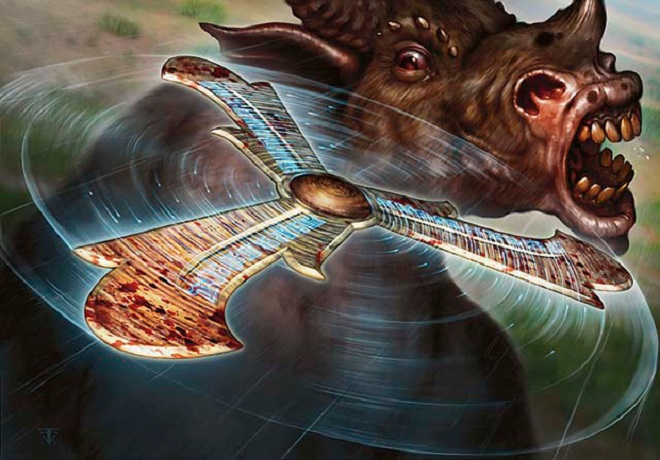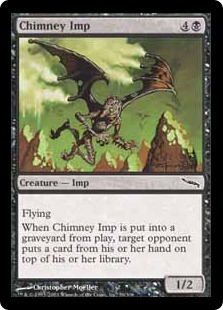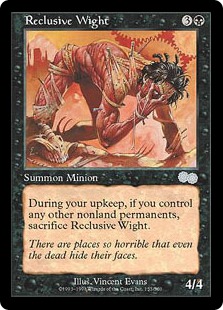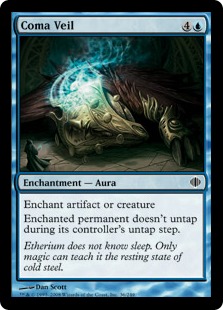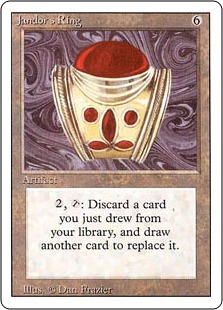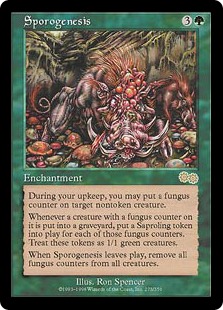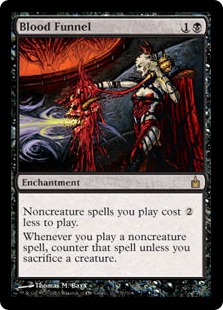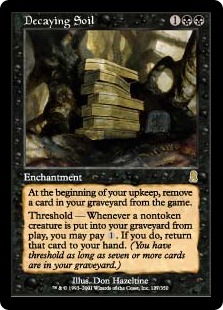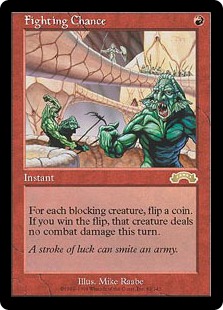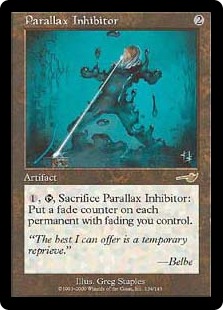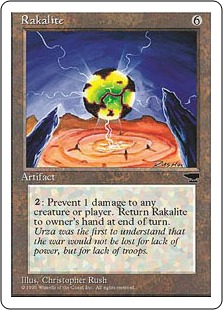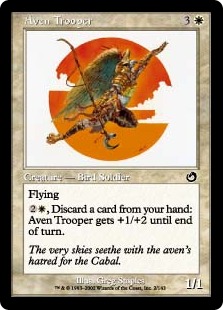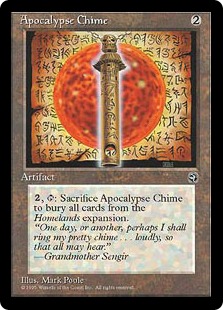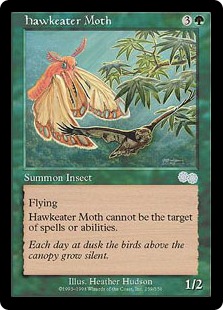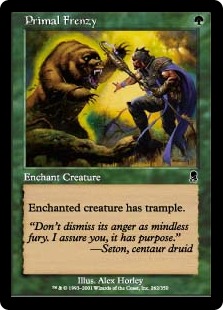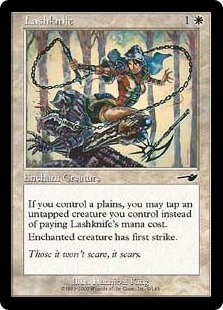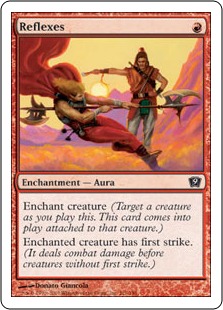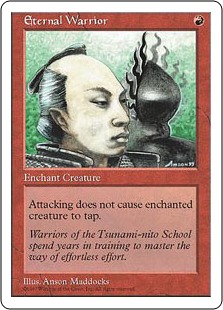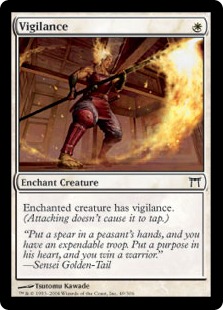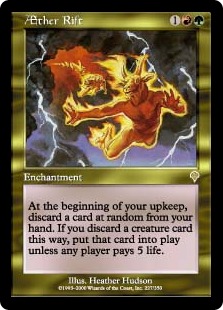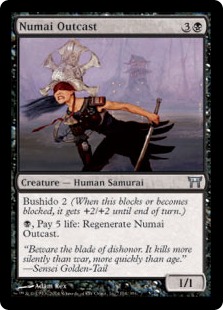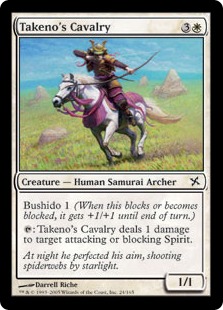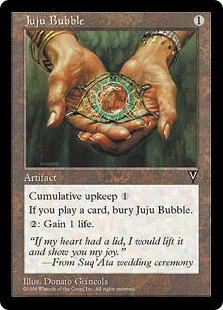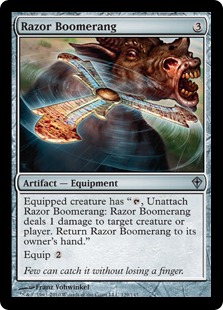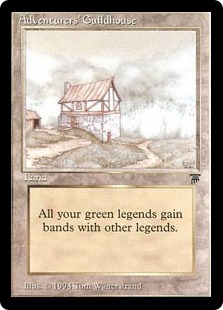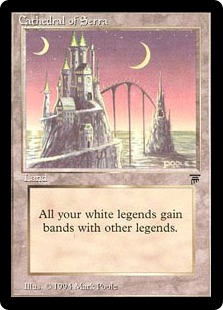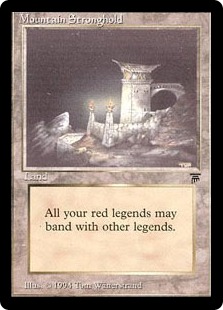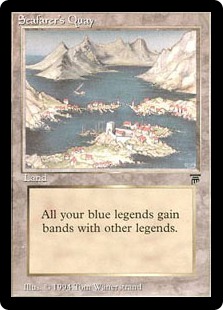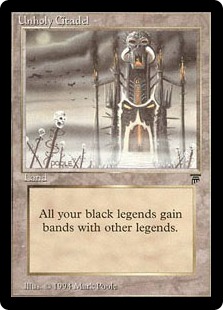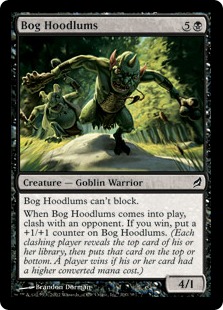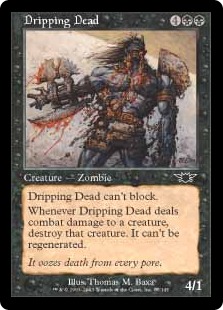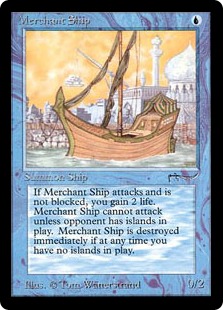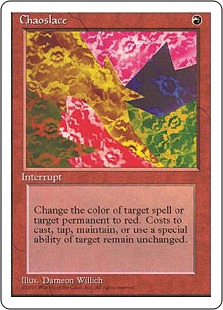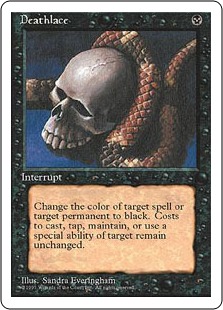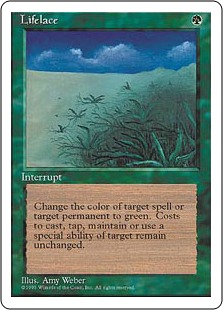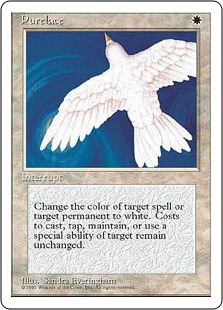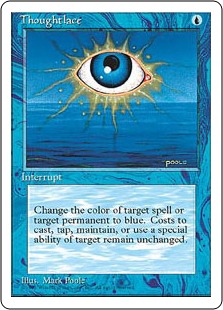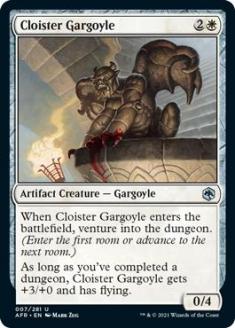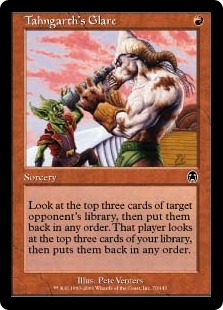Welcome back to The 100 Worst Magic Cards of all time! This is Part 2 of a four-part series, in which we explore the crème de la crap of what Magic: The Gathering has to offer.
Why bother exploring these cards? It’s fun to see how far Magic has come (or where it’s gone) through the lens of the few cards that are really bad. Some people love having a challenge in their deckbuilding and will use this article series as a bucket list for playing with their friends.
Most importantly, though, all of these cards are a lesson to be learned in game design. I don’t believe in ragging on something just for the sake of making fun. Instead, I’m hoping to enlighten people as to why these cards are bad, and which alternatives are available if they really want to play with that effect. Mark Rosewater has written several times about the power of learning from mistakes. I’m a firm believer in this concept as well.
Anyhow, you’re not here for a philosophical discussion about the power of learning from mistakes. You’re here for the worst cards of all time! Without further ado, here are numbers 75 through 51 of the worst Magic cards of all time.
#75 – Chimney Imp (Mirrodin)
Why is it bad? Many people hold Chimney Imp up as the model of the worst creature of all time. This is not the case! Chimney Imp is bad enough to make this list (a 1/2 flyer for five mana is really below rate), but it gives you card advantage (usually) when it dies. So let’s just agree to say it’s bad enough to make this list, but also agree that I’m going to show you some creatures that are much worse indeed.
What could you play instead? Dead set on playing a flying creature that costs four colorless and one black mana that could give you card advantage? Try Bloodtithe Collector or Crypt Angel instead. Other notable flying creatures at this exact mana cost are Skirge Familiar, Grotesque Hybrid, Cairn Wanderer, and He Who Hungers.
#74 – Reclusive Wight (Urza’s Saga)
Why is it bad? Want to play anything other than Reclusive Wight and lands? If so, sorry, it’s dead. The restriction on keeping Reclusive Wight is so stifling, there’s no realistic way to both keep it alive and have any sort of gameplan that involves attacking or blocking. Drafting a mono-black deck in triple Urza’s Saga Draft was one of the most overpowered Draft archetypes in Magic’s history. Reclusive Wight never made the cut in even that deck.
What could you play instead? Want to play a four-drop with a drawback? Grid Monitor is larger than Reclusive Wight and shuts down your ability to cast other creatures. Derelor makes your black spells cost another black mana to cast. Abyssal Persecutor makes it so that you can’t win the game and your opponents can’t lose (but at least you get a 6/6 body in the meanwhile).
Or you could just play cards like Ashling, the Extinguisher or Draugr Necromancer or Elusive Tormentor and get a 4/4 black creature for four mana with all upside and no drawbacks.
#73 – Coma Veil (Shards of Alara)
Why is it bad? If you’re going to play a removal spell, the point is to make sure that the creature is removed. Coma Veil will keep a creature tapped down, but it doesn’t actually tap the creature on the front end. This makes it cost way too much mana for the effect. It also doesn’t do anything to stop creatures there solely for defense, or creatures with vigilance.
What could you play instead? Bubble Snare, Capture Sphere, Castaway’s Despair, Charmed Sleep, Claustrophobia, and others usually cost three or four mana, and tap down a creature and keep it tapped down. Encrust does what Coma Veil does (keeps an artifact or creature tapped down), plus shuts off that card’s abilities, and it costs two mana less.
#72 – Jandor’s Ring (Arabian Nights / 3rd Edition)
Why is it bad? Six mana is not an insignificant amount to pay for an artifact. If you’re going to pay that much to draw cards, you’d better actually draw the cards. Jandor’s Ring lets you filter through a single card a turn. That’s not worth six mana up front, much less a further two mana a turn.
What could you play instead? Considering Jalum Tome came out just a couple of months after Jandor’s Ring, you’d wonder why they even bothered printing Jandor’s Ring. Or reprinting it. You could also run Staff of Nin, The Immortal Sun, or Obelisk of Alara.
#71 – Sporogenesis (Urza’s Saga)
Why is it bad? Sporogenesis does virtually nothing on the turn it enters the battlefield. Even once it gets going, you’re generally going to make a couple of 1/1 creatures before either Sporogenesis gets removed or the game ends. Speaking of removing Sporogenesis – if it goes, so do all the counters! You can’t even cast a second Sporogenesis to pick up where the first one left off. Worst of all, other Saproling cards that deal in counters make spore counters, not fungus counters.
What could you play instead? Jade Mage; Nemata, Grove Guardian; and Night Soil are much more reliable for making 1/1 Saproling tokens. Same with Selesnya Guildmate or Slimefoot, the Stowaway. Or Tendershoot Dryad. Your choice!
#70 – Blood Funnel (Ravnica)
Why is it bad? As I mentioned previously, putting combo pieces on a worst-of list is always a risky proposition. Blood Funnel works at cross-purposes to itself. You need to have creatures on the battlefield to keep your spells from being countered, yet want to focus mainly on casting noncreature spells. There are battlefield states you can back yourself into which keep you from being able to do anything for turns on end.
What could you play instead? There isn’t really a good substitute for Blood Funnel, if you only care about noncreature spells. Heartless Summoning is the inverse (creature spells cost two less), but that’s not the effect we’re going for here. Cloud Key is decent if you only care about reducing one type of card’s mana cost. Jet Medallion might be great in this instance as well!
#69 – Decaying Soil (Odyssey)
Why is it bad? Decaying Soil doesn’t do anything except shrink your graveyard before you have seven cards in the bin. Even then, it’ll continually keep shrinking your graveyard. If you manage to grow your graveyard large quickly and early, this is undeniably a powerful effect. It’s just hard to both activate and maintain – especially with so many cards in multiplayer that nuke entire graveyards at once.
What could you play instead? Oath of Ghouls lets you do this effect every turn for free, if you have more creatures in your graveyard than an opponent. Oversold Cemetery is more focused than Decaying Soil, and turns on sooner. Palace Siege is a guaranteed Raise Dead every turn.
#68 – Fighting Chance (Exodus)
Why is it bad? If you’re looking to keep creatures from dealing damage in combat, you’re generally going to want to look at white or green effects. Fighting Chance is a pseudo-Fog for blockers that only has a 50/50 chance of working. When you have this effect, you need it to be guaranteed. The better use is to cast Fighting Chance if your opponent has a horde of blocking creatures, to hopefully win the game with a Chance Encounter on the battlefield.
What could you play instead? Divine Light is a great one-off to keep your creatures alive. Dolmen Gate is even better, as you can repeat keeping your attacking creatures alive no matter the blockers. Inner Sanctum is a way to protect all your creatures from all damage they would take. Safe Passage saves both you and your creatures. Serene Sunset lets you pick and choose which creatures deal damage. And if you really, really, really want to play this ability in red, Feint and Glacial Crevasses are two off-color damage prevention abilities.
#67 – Parallax Inhibitor (Nemesis)
Why is it bad? Wizards of the Coast (WotC) realized that the fading mechanic was really confusing to most players, because the fading permanent would last one more turn after having zero fading counters. They rectified this by reworking the mechanic into vanishing. Vanishing is fading, except the permanent goes away as soon as it hits zero counters.
Parallax Inhibitor already did very little with a subset of cards that were only supported in a single set (Nemesis). The mechanic is completely dead now, so there’s no chance that Parallax Inhibitor will get better with time.
What could you play instead? The entire proliferate mechanic revolves around adding a counter of a type the card already has, so any card with proliferate will work better than Parallax Inhibitor. Animation Module, Dramatist’s Puppet, and Maulfist Revolutionary are also good cards which can replicate the effectiveness of Parallax Inhibitor, but for a wider range of cards.
#66 – Rakalite (Antiquities / Chronicles)
Why is it bad? Six mana to cast. Returns to your hand after use. Only use is damage prevention. The only reason Rakalite isn’t lower is that it’s feasible to use it in a deck that’s abusing huge amounts of mana. Decks that use Cloudpost or Urza lands. Realistically, though, Rakalite is just going to tap you out for a turn, and then prevent three damage the following turn before tapping you out if you dare cast it again. That’s pretty bad.
What could you play instead? Panacea can only target one creature a turn, but it costs two less than Rakalite and doesn’t return to your hand. Shield of the Ages protects the player, costs only two, and can be used multiple times a turn.
#65 – Aven Trooper (Torment)
Why is it bad? Four mana for a 1/1 flyer is just not where you want to be. Aven Trooper has an upside that sometimes mattered in Odyssey / Torment / Judgment Limited, since it could pitch cards to trigger madness or enable threshold. In Constructed Magic, there are much better ways to fill your graveyard, just as there are much better creatures you can get in white for four mana.
What could you play instead? Patrol Hound, Peace of Mind, Tireless Tribe, and Resilient Wanderer are all better cards to play if your sole purpose is to try to discard cards from your hand in white. As for creatures which have better power/toughness, let me recommend Commander Eesha, Emeria Angel, Guardian Seraph, and Shalai, Voice of Plenty over Aven Trooper.
#64 – Apocalypse Chime (Homelands)
Why is it bad? City in a Bottle kills all cards from Arabian Nights (and prevents them from being played to boot!). Golgothian Sylex kills all cards originally printed in Antiquities. Why is Apocalypse Chime so much worse than those other two cards?
Homelands is often considered the worst expansion in Magic’s history (an article for another time). Where Arabian Nights has Juzam Djinn and Library of Alexandria, and Antiquities has Mishra’s Workshop and the Urza’s lands, Homelands has… Sengir Bats? Serrated Arrows? The two best cards from Homelands are spells anyhow (Merchant Scroll and Memory Lapse), further adding insult to injury.
What could you play instead? Homelands has it bad enough. If for some reason your opponent is playing an all-Homelands deck, just use any number of the hundreds of removal spells in Magic’s history to deal with their permanents.
#63 – Hawkeater Moth (Urza’s Saga)
Why is it bad? Green is the color that gets the fewest flying creatures. When it does get flying creatures, they tend to be worse than the ones that other colors get. It only makes sense that green has one of the worst flying creatures of all time. We already saw how badly Aven Trooper and Chimney Imp finished on this list. Now make them a creature that green, a color that typically loves enhancing its own creatures, can’t even touch themselves. Unlike the Imp and the Bird, there’s no chance for Hawkeater Moth to do anything other than sit there and hope to take down another creature with one toughness.
What could you play instead? Kyscu Drake was printed in the Visions set. It is an anagram for “sucky drake.” It’s miles better than this card. If you really don’t want your opponents to be able to touch your creatures, play with creatures that have hexproof instead of shroud. Thrun, the Last Troll and Vine Mare are two excellent four-drop creatures in Green that have hexproof.
#62 – Primal Frenzy + Lance + Lashknife + Reflexes + Eternal Warrior + Vigilance (Odyssey + Alpha / Beta / Unlimited / 3rd Edition + Nemesis + Urza’s Saga / 7th Edition / 8th Edition / 9th Edition + Legends / 4th Edition / 5th Edition + Champions of Kamigawa)
Why are they bad? Beneficial Auras intrinsically have a drawback. If your opponent destroys the permanent you are trying to enchant, you end up losing two cards to their one removal spell. This means that beneficial Auras need to be so good that they are worth the risk, offer card advantage, or recur themselves. It also means that some effects are so bad, that they aren’t worth a card on their own.
Trample, first strike and vigilance are three keyworded abilities in Magic that, as it turns out, are three such abilities that are not worth a card on their own. The above cards all grant one form or another of these abilities, and nothing else. Lashknife is especially bad, in that it both costs two mana to cast and might be the most useless alternate-cost card in all of Magic
What could you play instead? There are endless variants of these cards that grant multiple bonuses, draw you a card in addition to the effect, or both. To break it down by ability type:
Trample – Rancor gives a creature +2/+0, trample, and returns to its owner’s hand when the creature dies, all for a single green mana.
First Strike – Cartouche of Solidarity, Hyena Umbra, Ethereal Armor, and Shadow Lance are all one-mana enchantments that make a creature larger and/or give you other bonuses in addition to granting the enchanted creature first strike.
Vigilance – Radiant Grace and Sentinel’s Eyes both grant an enchanted creature the vigilance ability, and then throw more bonuses on top of that.
#61 – Aether Rift (Invasion)
Why is it bad? Here’s a fun game we can play! How do we empty our own hand turn after turn for the low cost of three mana? Play Aether Rift, that’s how! Aether Rift is a one-way Bottomless Pit targeting yourself. The upside of Aether Rift is that you can potentially cheat creatures onto the battlefield that cost huge amounts of mana. The downside? Any opponent can pay five life to counter this effect – so you’re still down a creature. In Commander play, this is a nothing payment.
Conceivably, you could set up your deck so that every non-Aether Rift card is a huge creature that forces life payments each turn. Even under that scenario, you’re probably playing 30% lands, so you’ve got about a 3/10 chance of blanking, and a 7/10 chance of having your opponents pay five life and then smash your empty battlefield.
What could you play instead? Atla Palani, Nest Tender is a great way to get a (semi-random) creature into play at a cheated cost each turn. Mayael the Anima likewise can start getting huge fatties off the top of your library straight into your opponent’s noggin.
#60 – Numai Outcast + Takeno’s Cavalry (Champions of Kamigawa + Betrayers of Kamigawa)
Why are they bad? Each of these creatures is a lowly 1/1 outside of combat. This is way too small for attacking or blocking. Numai Outcast can grow to a 3/3 if blocking/blocked, but the regeneration cost on it is insanely high (five life!) Takeno’s Cavalry can at least function outside of combat…but only to deal one damage to a Spirit. Both of these cards are far below the curve when it comes to abilities and stats against cost.
What could you play instead? Heavy Ballista is superior to Takeno’s Cavalry in every way that matters. It costs the same, deals more damage, and has a larger base stat line at all times. If you really want a 1/1 creature for four mana that regenerates in black, I can offer you Darkling Stalker, which outclasses Numai Outcast in every way that counts.
#59 – Juju Bubble (Visions)
Why is it bad? If we were just looking at the cumulative upkeep, Juju Bubble would not be a bad card. I have personally run Juju Bubble in Sealed Deck and Draft before. Gaining ten-plus life in a stalemate when a format is filled with X-spells is not the worst effect in the world. For Constructed Magic, though, that darn “if you play a card, bury Juju Bubble” clause is a huge dealbreaker. If you’re playing against a deck where lifegain matters, you’ll need to be playing cards. If you’re playing against a deck where lifegain doesn’t matter (like control), this is just going to be a dead draw that prevents you from furthering your battlefield position. In Commander, though? Holy cow, is this a bad card.
What could you play instead? Sun Droplet and Chalice of Life are both repeatable lifegain engines you can use that net you the same as Juju Bubble, but without the “don’t play other cards” restriction. Rejuvenation Chamber is great, if you don’t care about the card going away in a few turns.
#58 – Razor Boomerang (Worldwake)
Why is it bad? WotC has scaled back from having “Tim” creatures in Magic. These are creatures named after Tim the Enchanter from Monty Python and the Holy Grail. Prodigal Sorcerer was the original version of this card. WotC found that having creatures with this effect led to unfun play patterns in Limited, and generally weren’t played in Constructed.
Razor Boomerang is the utmost extension of “Fine, we’ll print this effect in a Limited environment, but we’re going to make it terrible because anyone can use it.” This especially sticks out in a set where Cunning Sparkmage was a must-play Limited red card.
In short, paying five mana and tapping down a creature for a turn is not a good rate to deal one damage.
What could you play instead? Viridian Longbow is the better version of Razor Boomerang. Accept no substitutes…except for this one!
#57 – Adventurers’ Guildhouse + Cathedral of Serra + Mountain Stronghold + Seafarer’s Quay + Unholy Citadel (Legends)
Why are they bad? The banding ability is no longer being supported officially in Magic. It’s been stated that the ability is too confusing (it is!), and so it’s been phased out.
Bands with others is not banding. It’s a pseudo-banding that is even more confusing than banding. Suffice it to say, this cycle of lands was so bad that they made the Top 10 of my Worst Magic Cards of All Time article back in 2004. None of these lands produce mana, so you’re effectively giving up your land drop for the turn in exchange for giving your legendary creatures a semi-useless ability.
It’s funny enough that Commander has become popular enough to drag these cards out of the bottom of the bottom. Suddenly there is a format based around legendary creatures that can at least make these cards playable in some fashion. Is this cycle any good? No, no, it isn’t. Is it Bottom 10 of all time? Thanks to Commander, not anymore.
What could you play instead? Baton of Morale is a great way to give any of your creatures banding. Same with Helm of Chatzuk. If you really, really want your creatures to have banding, just go with one of those artifacts rather than giving up your land drop.
#56 – Bog Hoodlums + Dripping Dead (Lorwyn + Legions)
Why are they bad? Both Bog Hoodlums and Dripping Dead are 4/1 creatures for six mana that can’t block. Dripping Dead kills anything that blocks it, and Bog Hoodlums can sometimes be a 5/2. Both of these cards are way off the pace for their mana cost. Both of these cards are useless on defense, making them pretty horrible for Limited. And both of these cards were pushed in the wrong direction pretty hard due to the tribal theme in their respective sets (Goblins in Lorwyn, Zombies in Legions). Even within their own environs, they were don’t-play-me cards.
What could you play instead? There are 22 six-drop Zombies that are all better than Dripping Dead. I recommend checking out Twisted Abomination; Mikaeus, the Unhallowed; Helldozer; and Calculating Lich. There are also six six-drop Goblins that are all better than Bog Hoodlums. I’ll just name them all for you! Akki Battle Squad; Goblin Goliath; Goblin Marshal; Muxus, Goblin Grandee; Ponyback Brigade; and Wort, the Raidmother.
#55– Merchant Ship (Arabian Nights)
Why is it bad? This is a creature that has zero power. It can’t attack unless your opponent controls an Island. The reward for attacking? You gain two life if Merchant Ship isn’t blocked. Unless your opponent has two creatures, who isn’t going to block it? And even if it isn’t blocked – do you really want to spend a card to cast a 0/2 creature with such a restricted ability to do anything? Signs point to no.
What could you play instead? Aegis Turtle will prevent more damage than Merchant Ship will gain life. Wall of Runes will advance your deck state at virtually the same stats. Really – there are a lot of better choices out there for a single blue mana if all you care about is gaining life / preventing yourself from taking damage.
#54 – Fasting (The Dark)
Why is it bad? White is the primary color of lifegain in Magic. There are multiple cards in most sets that are white and gain life. Fasting is the among the worst lifegain cards in all of Magic. (Spoiler alert: note the word “among” there.) Giving up your draw phase to gain two life is bad. If for some reason you need to keep Fasting around, your opponent(s) can force you to draw a card, killing Fasting. But hey – it goes away after five turns anyhow. Nothing lives forever!
What could you play instead? The list of one-mana white lifegain spells that are better than Fasting is too long for one article. Let me just list three that are well-known, and call it a day. Play Martyr of Sands, Soul Warden or Soulmender instead.
#53 – Chaoslace + Deathlace + Lifelace + Purelace + Thoughtlace (Alpha / Beta / Unlimited / 3rd Edition / 4th Edition)
Why are they bad? The Laces were the original cycle of cards that were jokes to open as your rare in an older booster pack. The problem is that there were five of them, and all five had extremely limited uses. Chaoslace and Thoughtlace could play shenanigans with Red Elemental Blast and Blue Elemental Blast. Deathlace and Purelace messed with protection from black and protection from white creatures. Lifelace? About as useful as Aisling Leprechaun. If these were one niche card that changed any card or spell into any color, it’d at least be tolerable. But having five chances to essentially open a blank in a pack of Alpha, Beta, Unlimited, 3rd Edition, or 4th Edition? Unspeakably bad.
What could you play instead? Prismatic Lace covers all five of the other Laces as far as changing the color of a permanent goes. Blind Seer (who is Urza in disguise – no, really!) can change the colors of both spells and permanents repeatedly.
#52 – Cloister Gargoyle (Adventures in the Forgotten Realms)
Why is it bad? As of right now, the venture/dungeon mechanic is parasitic; it only interacts with a specific set’s theme and is not compatible with the game at large. WotC was very concerned that pushing this mechanic too hard could lead to repetitive and unfun play patterns, so the majority of venture cards were scaled back in power pretty hard. Cloister Gargoyle is among the worst of these cards, being a 0/4 for three mana that has virtually no chance of ever becoming a 3/4 flyer. The mechanic as a whole wasn’t strong enough, and Cloister Gargoyle certainly does no favors when it can add such things as “scry 1” or “gain 1 life” as the tag-on for venturing.
What could you play instead? If you want to play a deck that ventures into the dungeon, play Nadaar, Selfless Paladin. It costs the same as Cloister Gargoyle, has better base stats, can venture multiple times in a game, and has a good reward for completing a dungeon.
#51 – Tahngarth’s Glare (Apocalypse)
Why is it bad? When I made this list, I had to separate this card from Index and Visions (#92). Whereas Index and Visions don’t really accomplish much, Tahngarth’s Glare can actively hurt you. Looking at the top three cards of your opponent’s library and reordering them is actually a great effect at one mana. Unfortunately, casting Tahngarth’s Glare means that your opponent also is getting the same effect to be used against you…for free. You just spent a card to set both yourself and an opponent back a turn? Two turns? In Limited, you’re as likely to be hurt by this card as your opponent. In Constructed? Thanks for casting this card and essentially starting the game with one fewer card in hand.
What could you play instead? I said it before, and I’ll say it again – Sensei’s Divining Top and Scroll Rack are much better if you want to set up your own draws. Want to mess with what your opponent is drawing? Cruel Fate, Sealed Fate, and Second Sight can do this effect without messing up your own future draws. Spin into Myth can do this as well, in addition to taking a creature off the battlefield.
See you all tomorrow for the penultimate part of The Worst 100 Magic Cards of all time! And Tweet @StarCityBen to share your thoughts.

